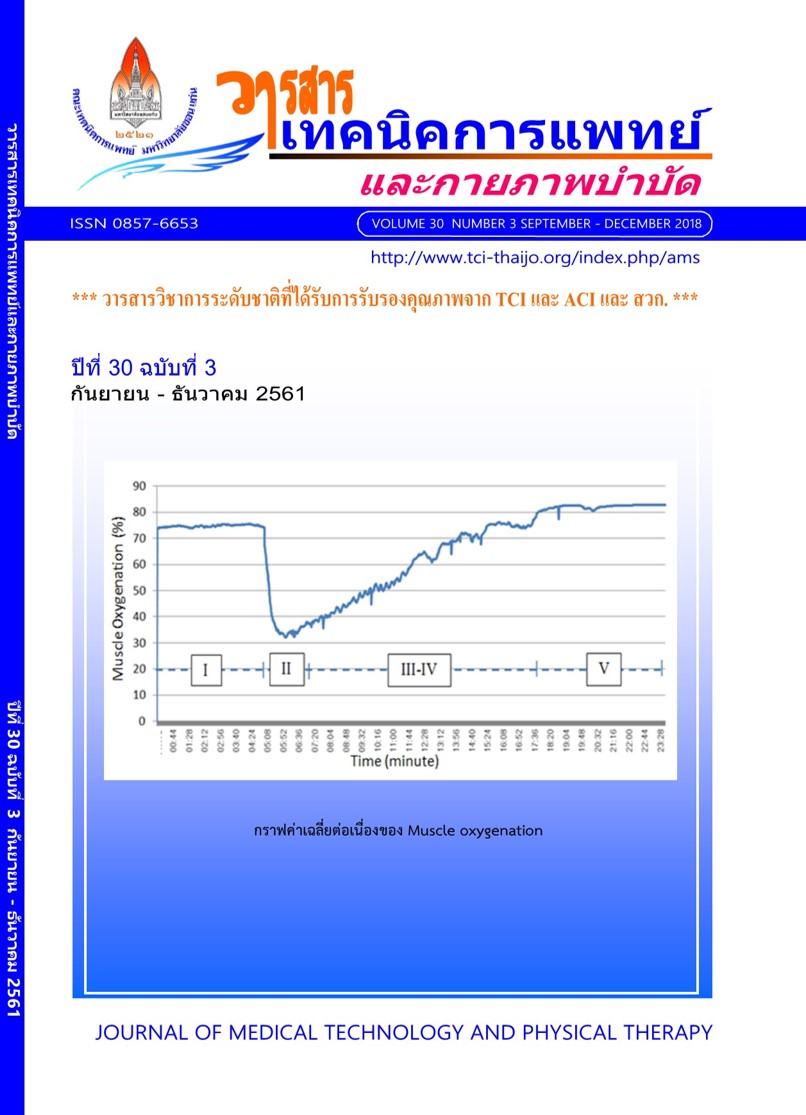Self-report of drooling impact on social-interaction and self-esteem in children with cerebral palsy
Main Article Content
Abstract
Drooling and associated factors can impact children with cerebral palsy (CP) and caregivers. Previous studies used proxy-report to describe the impact of drooling in children with CP. There is limited data on severity and impact of drooling reported by the children’s perspective. The aims of this study were to 1) report severity of drooling and impact of drooling on social interaction and self-esteem in children with CP, 2) examine the relationship between severity of drooling and levels of Gross Motor Function Classification System (GMFCS) and 3) examine the relationship between severity of drooling and impact of drooling on social interaction and self-esteem using self-reports by children with CP. A cross-sectional descriptive study was conducted in children with CP who had drooling, aged from 7 to 18 years old, at the Sri Sangvalya Khon Kean School and Sri Sangvalya Chiang Mai School. We assessed the drooling condition using a direct observational method, and rated its severity with the drooling quotient 5-minutes scale (DQ5). The impact of drooling on social interaction and self-esteem were self-reported using a yes-no questionnaire and the level of satisfaction were marked on a 13.5-centimeter line. Correlation between severity of drooling and levels of GMFCS was analyzed using spearman’s rank correlation coefficient, the relationship between the severity of drooling and impact on social interaction and self-esteem were analyzed using the Chi-Squared (x2) and spearman’s rank correlation coefficient respectively. Result found that 91 of 355 (26%) children were reported with having drooling condition and 65 of 91 (71.4%) children had severe drooling condition. The severity of drooling was statistically related to the levels of GMFCS (r = 0.624, p = 0.001). There were 62 (68%) children with CP could answer questionnaire on impact of drooling, the result showed that the severity of drooling was significantly related to impact on social interaction regarding their relationship with friends (x2= 14.39, df = 1, p < 0.001), with adults (x2= 24.31, df = 1, p < 0.001), and their mental capability (x2= 20.89, df = 1, p < 0.001). There was no statistically significant relationship between severity of drooling and impact on self-esteem. We concluded that children with CP show condition of drooling and its severity is significantly related to their gross motor functions and impact on social interaction.

